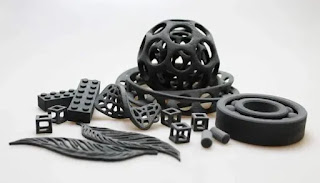International Conferences on Composite Materials
4th Edition of International Conferences on Composite Materials
Award Nomination - https://x-i.me/compram1
Abstract Submission - https://x-i.me/compabst2
Polymer 3D Printing Is Being Driven by Material and Technological Innovations
The first 3D printing process invented was stereolithography, a method wherein a photosensitive polymer is hardened via a laser, putting plastics at the forefront of the market since the very beginning. Something that has continued to this day. Indeed, according to a a study by IDTechEx, titled “Polymer Additive Manufacturing 2023-2033: Technology and Market Outlook,” polymer 3D printing is valued at $21 billion in 2033. And to understand this growth, it’s not enough to say that polymers have always been a part of 3D printing, but to look at what innovations have been dreamed up in recent years. More and more players are offering other forms of materials such as foams, composites or viscous thermosets. The same applies to new printing technologies – volumetric 3D printing comes to mind. But what is driving the growth of the plastics printing market? And what are the remaining obstacles?
The IDTechEx report begins with a segmentation of the polymer additive manufacturing market by technology and material – as you can see from the diagram below, there are many printing processes, thus multiplying the material offerings. Filament, resin, powder, pellet: it is interesting to note that polymer powders are expected to grow rapidly over the analysis period. This increase could be attributed to the properties that these plastics offer – they are most often so-called technical polymers that are mainly used for industrial applications. Indeed, the report emphasizes that users are more focused on final production, to the detriment of rapid prototyping. Furthermore, these users have a better knowledge of the technologies, which allows them to move towards high value-added applications such as the manufacture of custom-made parts, in more or less large volumes. However, rapid prototyping remains a key use of polymer 3D printing.
What is interesting in the study proposed by the firm is to note the place that startups are taking in this market: while historical players such as 3D Systems or Stratasys continue their innovation strategy, initiatives are emerging around new materials or faster or more efficient printing processes. The objective of these startups is to push the potential of polymer additive manufacturing, by improving each link of the value chain – software, machines, materials, post-processing, etc. The study has identified “innovators” in these different segments – nine to be precise – and shows how the market could benefit from these advances to grow. These are obviously projections, and it will be interesting to see in the next few years how these startups have really in




Comments
Post a Comment